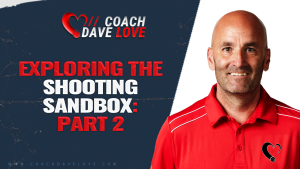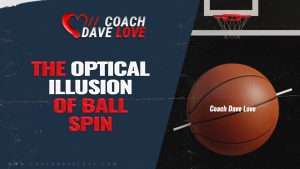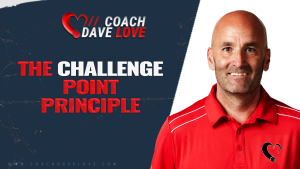Allow me to generalize for a moment.
When we think of the effective ways for different levels of players to work on their shots, we tend to think of a couple examples. Young players line up close to the rim, feet glued to the floor, rehearsing “perfect” elbow‑in, goose‑neck form. Or, NBA veterans—some of whom struggle mightily from the free‑throw line—sprint through game‑speed three‑point drills with barely a hint of technique work. On the surface this makes sense: kids need the basics, pros need game realism. Kids do “form shooting”, pros shoot “game-shots, from game spots, at game-speed.”
Ecological‑Dynamics (ED) research suggests we may have the order backward. Children haven’t yet settled into any one coordination pattern; they’re still exploring. Experienced professionals, on the other hand, often carry deeply entrenched “negative attractors”: stable but inefficient mechanics reinforced by tens‑of‑thousands of reps. Mild tweaks bounce off these habits like rubber bullets.
In an effort to keep this simple, I’m suggesting two things… there is more value in form shooting for high level players than novices, and what we think of as “form shooting” needs face-lift.
Attractors, Hysteresis, and the Real Meaning of a “Bad Habit”
An attractor is a movement pattern the body returns to under pressure. It becomes “negative” only when that pattern is no longer functional—think of a flared elbow that always pushes the ball left. The problem is hysteresis: the old pattern’s stubborn persistence even after constraints change. A player may feel they’ve made a huge adjustment, yet slow‑motion video shows the same flaw.
With a seven‑year‑old, hysteresis is practically zero; nothing is ingrained. With a twenty‑eight‑year‑old pro who shoots 20 % from three, hysteresis can be enormous. Small constraints or typical Differential‑Learning drills may not generate enough “perturbation” to push the system into a new coordination state.
In other words, how engrained a habit is (rather than the experience level or age of the player) would determine how much “form shooting” might be valuable. But we need to also discuss what that looks like…
Two Faces of “Form Shooting”
Traditional form shooting is usually viewed as a single, decomposed drill: stationary, close‑range, high‑rep, highly prescriptive (“elbow in, hold the follow‑through”). It removes nearly all game elements and funnels players toward one textbook shape.
Contemporary form shooting is different. Think of it as a family of low‑variability drills that still preserve core game information—a full shooting motion, a realistic pass, a hop or relocation step—while deliberately reducing defender pressure and distance. The goal isn’t to prescribe an elbow angle but to give the athlete a calmer laboratory for guided exploration.
We should be working to eliminate traditional form shooting from our coaching repertoires, and replace it with more dynamic Contemporary Form Shooting, but only for players with deeply engrained habits.
Matching Intervention to Habit Stability
A useful way to plan is to scale the magnitude of constraint to the depth of the habit:
Mild constraints (tiny stance tweaks, slight pass changes) work for novices and average shooters who are still flexible. Let the players explore a wider range of movement solutions to find patterns that work best for them.
Moderate constraints (partial defenders, deliberate guide hand removal) help when mild changes don’t stick.
Strong constraints (slowing down a portion of the movement pattern) crack deeply ingrained patterns in advanced athletes.
“Shock” constraints (isolating movements) are a last resort for bullet‑proof bad habits.
Important: Even the strongest constraints should keep some game realism—simple movement, shooting distance, catching a pass—so the new pattern has a direct line to on‑court performance.
Where “Low‑Variability” ≠ “Mindless Block Practice”
When hysteresis is high, we may shift an athlete into very low‑variability work for their Movement Coordination training, and for more frequent interventions. That can look like block practice, but the intent is different:
The drill is still goal‑directed (e.g., catch‑and‑shoot off one step, 15 ft).
It still preserves external focus (“push through the middle of the rim”).
Sessions are short and followed by variable, Skill Adaptability reps once the new pattern holds.
Think of low‑variability periods as a potent medicine: effective only in measured doses, always followed by a return to richer game contexts.
Practical Takeaways
Youth coaches: Replace long lines of decomposed form shooting with playful exploration—lower rims, lighter balls, different angles, external cues, small-sided games. Let children discover how to coordinate their bodies before you freeze degrees of freedom.
NBA skill coaches & GMs: A veteran’s broken jumper may need more tightly constrained form work—contemporary form shooting—to destabilize the old attractor. Once objective change appears, layer defenders and movement back in so the pattern transfers.
Across all levels: Monitor with video or metrics. If the athlete “feels” different but looks the same, escalate constraint intensity; if the new pattern sticks under pressure, dial variability back up.
Closing Thought
Block‑style repetition isn’t inherently bad; it’s simply a tool. Use it sparingly for kids, who thrive on exploration, and strategically for pros whose habits are welded in place. Flip the script and match constraint intensity to habit stability—that’s how negative attractors become functional, game‑proof solutions.



